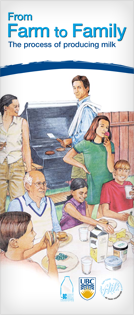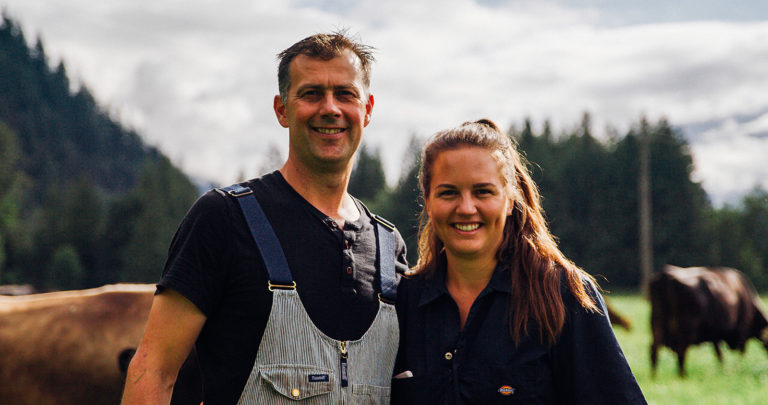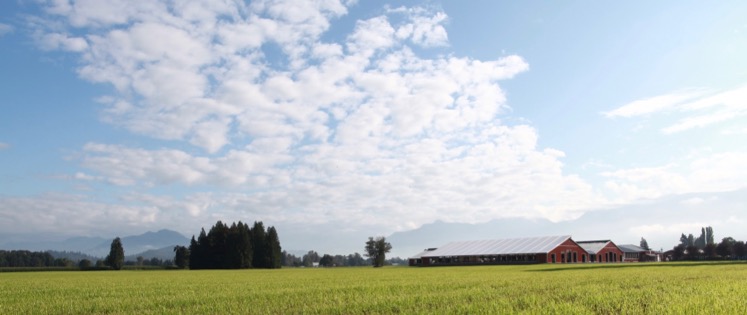The process of producing milk
The process of producing milk
Since 1827 dairy farmers in British Columbia have been an important force in shaping our communities. Today the dairy industry is the largest single component of BC agriculture.
BC farmers use advanced techniques and follow strict standards for the production and harvesting of food crops. The dairy industry has some of the highest standards for milk production, transport and processing found anywhere in the world.
BC farmers are North American leaders in developing and adopting technologies
which reduce the impact on the environment. They support animal welfare research and proudly promote a vibrant and sustainable agriculture sector.
You can depend on BC’s dairy industry to always supply high quality, safe and nutritious dairy products for you to enjoy.
Here’s how they’re made!
- Photosynthesis
Plants capture the sun’s energy to fuel the food chain. Plants use sunlight to convert carbon dioxide and water into carbohydrates and oxygen by photosynthesis (CO2 + H2O CH2O + O2). - Nutrient Absorption
Nitrogen (N), Phosphorous (P), Potassium (K), Water (H2O) and other soil nutrients are taken up by the plant’s roots. - Harvesting
Machines harvest plants that are fed either immediately to the cow or stored as hay, silage or grain to be fed later. Cows harvest plants by grazing and browsing. - Feeding
Dairy cows are free to eat as they please. In the barn they are fed a mixture of hay, silage and grain called a total mixed ration (TMR). Vitamins and minerals are included for optimal health. - The Dairy Cow
Cows use their specialized digestive system to turn plants into fuel for growth and development, maintaining good health, and milk production. Dairy cows calve once a year. After giving birth they are milked throughout their lactation cycle of 305 days. - The Dairy Cow’s Stomach
Cows are called ruminant animals because they chew their cud (ruminate). Ruminants have very large compartmentalized stomachs containing microorganisms which digest cellulose and other plant materials. The four compartments are:rumen (80% of stomach’s volume)
reticulum
omasum
abomasum (‘true’ stomach) - The Dairy Farm
Dairy farms are government inspected and certified. - Housing
Dairy cows spend most of their time in barns, which provide a clean and safe environment protecting them from the elements and allows for the provision of adequate nutrition. Under suitable conditions cows graze on pasture. - Milking
The udder is sanitized before and after milking. A healthy cow in BC produces (on average) about 33 litres of milk/day for 305 days, followed by 60 days of rest. This amounts to approximately 10,000 litres of milk per lactation. - Milk Handling
As soon as milk leaves the cow it is cooled and stored at 2-4°C. It is transported to a licensed dairy processing plant in a refrigerated stainless steel tanker. These trucks are certified before they can carry milk and are inspected regularly. - Quality and Processing
Before the truckload of milk is unloaded for processing at the dairy plant, it is tested to ensure it meets strict quality standards and to identify potential contaminants such as antibiotics. All dairy processing plants are inspected regularly for cleanliness, handling procedures and equipment standards. All fluid milk sold in Canada must be pasteurized to ensure safety and maintain freshness. - Fuelling Active People
Milk products support an active lifestyle by providing fluids, carbohydrates (energy), protein, vitamins and minerals. - Supporting Growth and Development
Milk products at home and in the school provide essential nutrients for optimal growth and development. Calcium and vitamin D are crucial during the peak bone building years of childhood and adolescence. - Maintaining Health
Milk products play an important role in overall healthy eating. They are rich sources of calcium and vitamin B12. Milk is also an excellent source of vitamin D. Milk products help reduce the risk of hypertension, osteoporosis and some forms of cancer.



